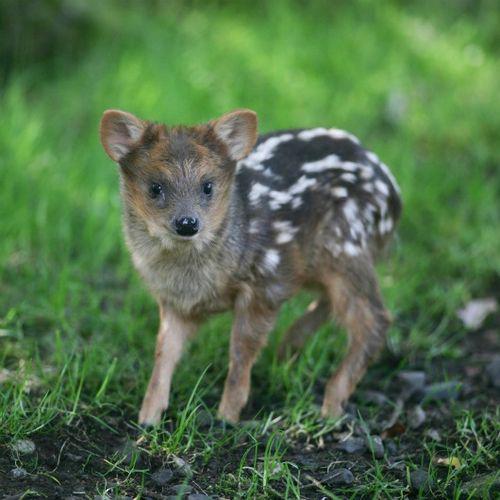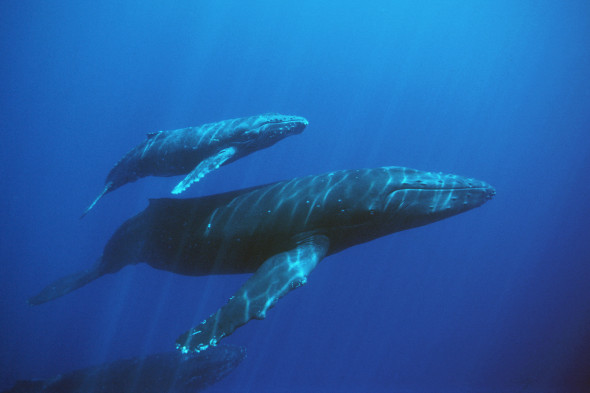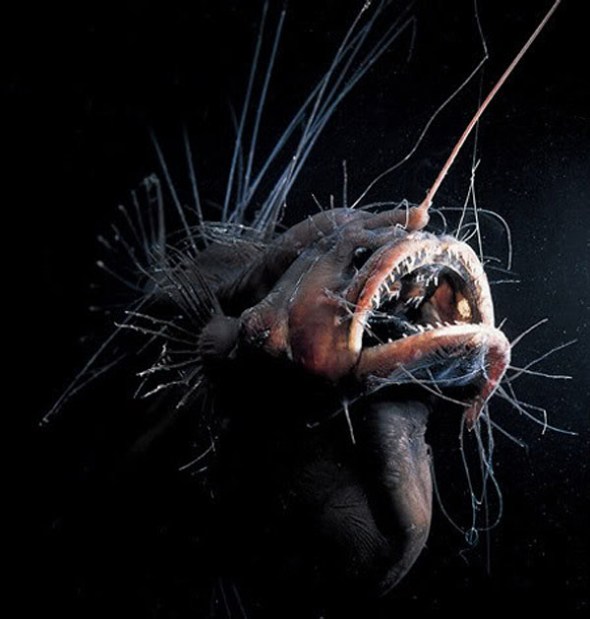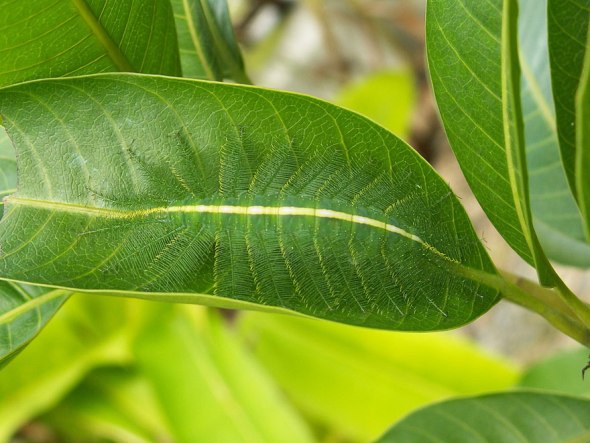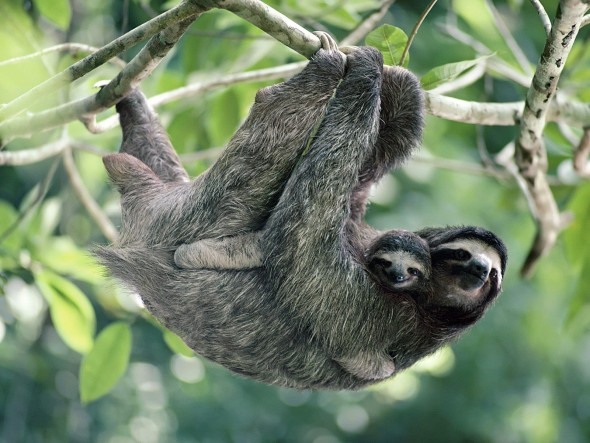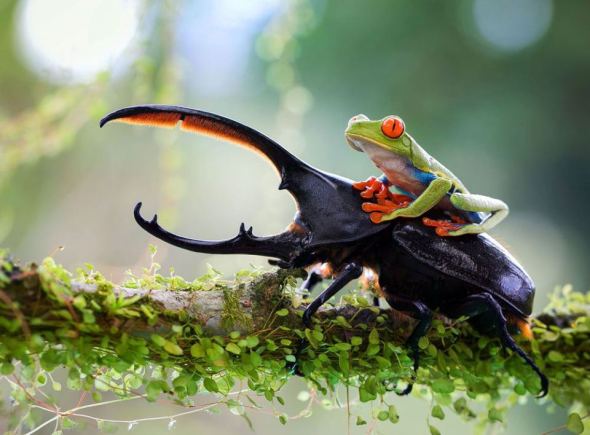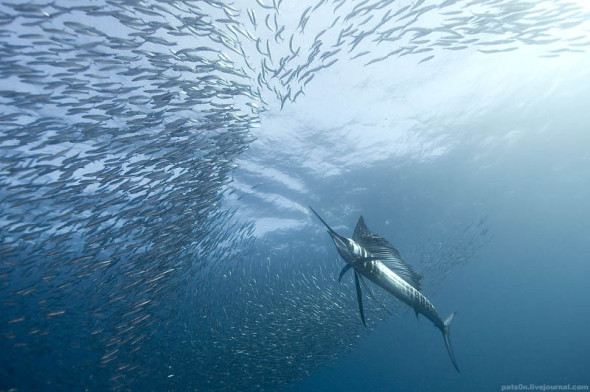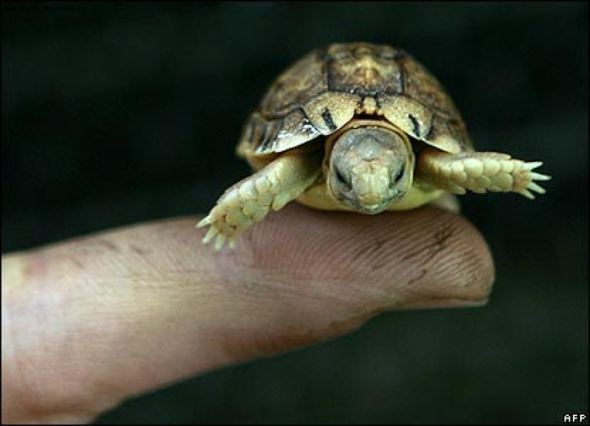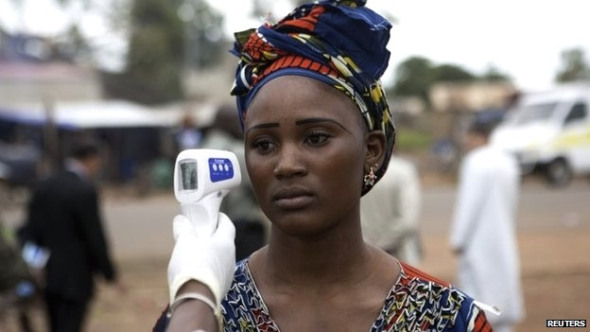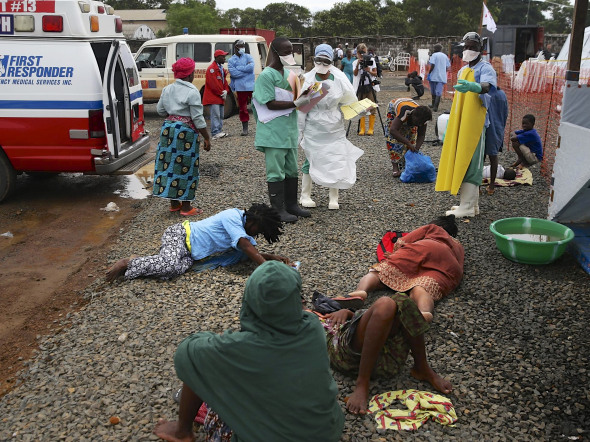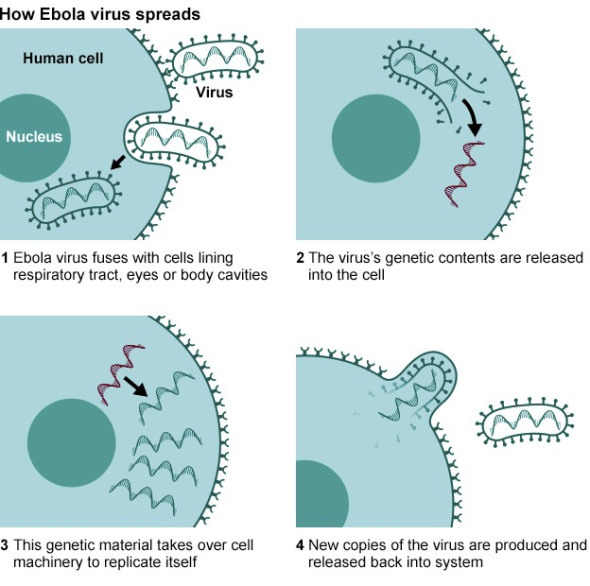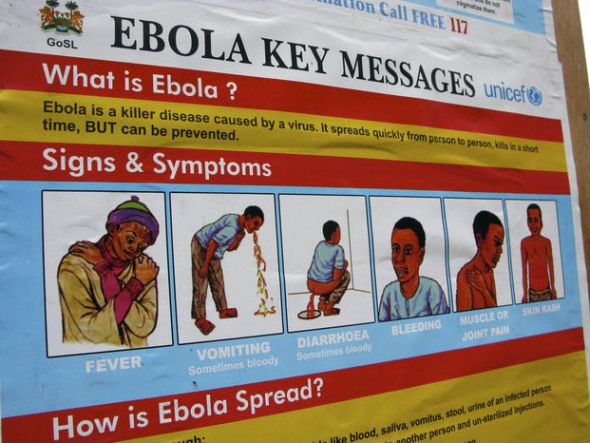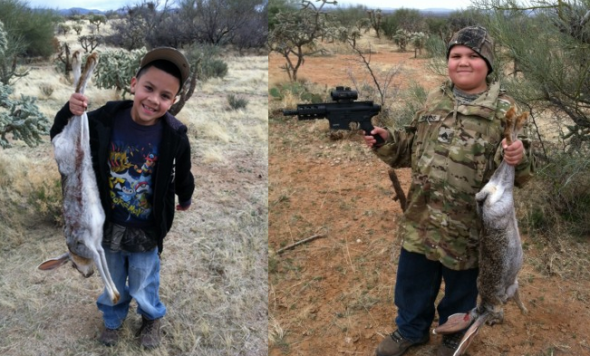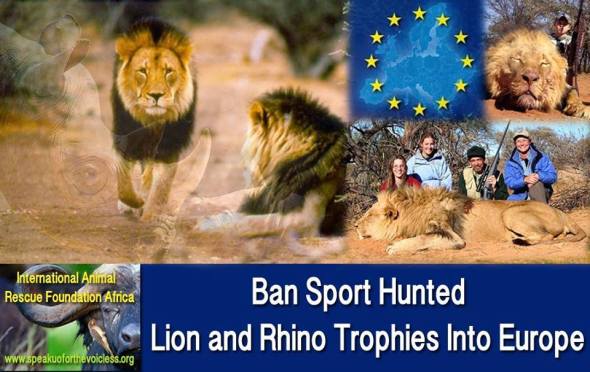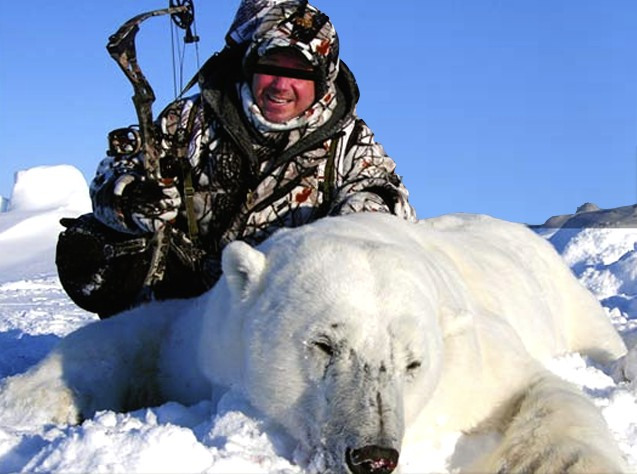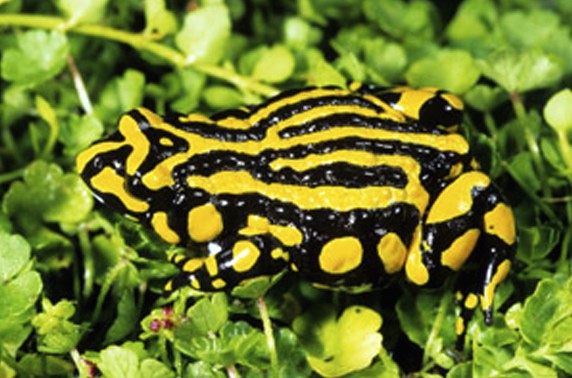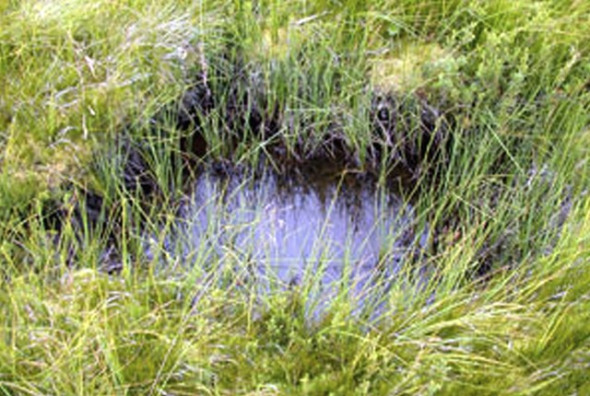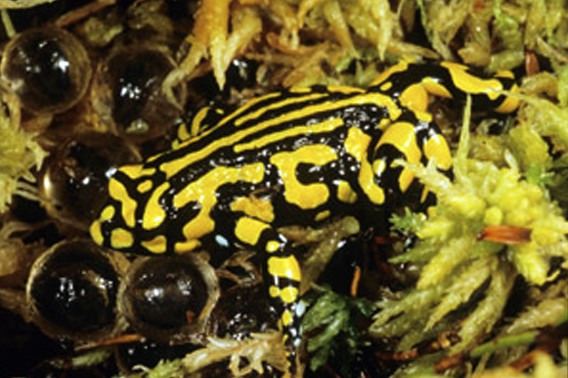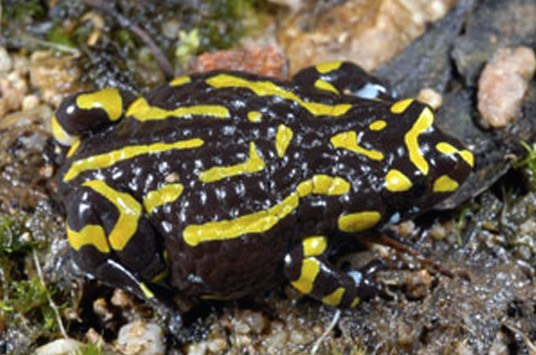Animal Planet - Mother Natures Finest
Mother Nature hides many secrets that we as humans are still fully unaware of. Below is a quick run down of Mother Natures finest specimens of animals that International Animal Rescue Foundation has picked for your information.
In at number one is the smallest deer in the world.
Pudus Deer;
Endangered
The pudús are the world’s smallest deer, with the southern pudú being slightly larger than the northern pudú. It has a stocky frame supported by four short and slender legs. It is 32 to 44 cm (13 to 17 in) high at the shoulder and up to 85 cm (33 in) in length. Pudús normally weigh up to 12 kg (26 lb), but the highest recorded weight of a pudú is 13.4 kg (30 lb). Pudús have small, black eyes, black noses, and rounded ears with lengths of 7.5 to 8 cm (3.0 to 3.1 in). Sexual dimorphism in the species includes an absence of antlers in females. Males have short, spiked antlers that are not forked, as seen in most species of deer. The antlers, which are shed annually, can extend from 6.5 to 7.5 cm (2.6 to 3.0 in) in length and protrude from between the ears. Also on the head are large preorbital glands. Pudús have small hooves, dewclaws, and short tails about 4.0 to 4.5 cm (1.6 to 1.8 in) in length when measured without hair. Coat coloration varies with season, gender, and individual genes. The fur is long and stiff, typically pressed close to the body, with a reddish-brown to dark-brown hue. The neck and shoulders of an aged pudú turn a dark gray-brown in the winter.
In at number two is the loudest animal on the planet the Blue Whale;
Endangered
The blue whale is the loudest animal on the face of the earth. However not far off from the this mega beast is the second loudest animal on the planet being that the Howler Monkey.
The call of the blue whale reaches levels up to 188 decibels. This extraordinarily loud whistle can be heard for hundreds of miles underwater. Theoretical calculations by Roger Payne and Douglas Webb (from the 1970’s) predicted that the loudest whale sounds might be transmitted across an entire ocean. The blue whale is much louder than a jet, which reaches only 140 decibels! Human shouting is 70 decibels; sounds over 120 decibels are painful to human ears. The second-loudest animal on Earth is the howler monkey (Alouatta) from the jungles of Central and South America.
In at number three is the Honduran White Bat;
The only white bat on the face of the planet of which is just that “white” and not albino. Whats so special about the Honduran White Bat though other than its white? Well its the only bat that doesn’t actually live within caves, more rather under heliconia leaves.
Near threatened
The Honduran white bat cuts the side veins extending out from the midrib of the large leave of the Heliconia plant causing them to fold down to form a ‘tent’. They cling to the roof of this tent in small colonies of up to half a dozen individuals, consisting of one male and a harem of females. The tent protects them from rain and predators. Most tent-making bats take flight at even slight disturbances, but researchers in Costa Rica have reported that Honduran white bats take flight only when the main stem of their tent is disturbed, possibly because they are well camouflaged. Although their tents are typically low to the ground (about six feet), sunlight filters through the leaf which gives their white fur a greenish cast. This almost completely conceals them if they remain still. It has been suggested a colony may have a number of tents scattered within the forest. It is one of 15 species of Latin American bats that roost in tents. In the Old World, 3 species of bat from India and Southeast Asia are known to roost in tents.
In at number four is the angriest looking animal on the planet, the Angler Fish;
IUCN Red List - Unknown
In the darkest depths of the ocean where the water is freezing cold, the pressure is enormous and food is scarce lives the angry-looking deep sea anglerfish. This fascinating fish is not only an incredible example of how organisms manage to survive in the most inhospitable environments, it has one of the most bizarre ways of reproducing in the animal kingdom. The deep sea anglerfish is one of the deep ocean’s most fascinating residents. Living at the extreme depths between 1.5 and 2.5 km, their most peculiar appearance is a modified fin that acts as a lure, hanging above their huge mouths containing needle-like teeth. The tip of this “fishing rod” on top of their head is bioluminescent (glowing in the dark) because of bacteria living inside it and attracts prey in a similar way like moths to a lightbulb. By wiggling the glowing outgrowth, it lures prey close enough to devour them whole. Because of thin, soft bones and jelly-like skin, these scary looking fish can expand their jaws and stomach to such an extent that they are even able to actually swallow prey up to twice their own size. In the deep sea where food is very scarce, being able to eat large quantities at once is a great adaptation. Now that’s pretty awesome but weird yet wonderful too..
In an number five is the worlds most camouflaged animal the Common Baron Caterpillar;
IUCN Red List - Unknown
Just take a closer look at the image below. Do you see anything besides a leaf? If you look closer you can catch a glimpse of a tiny little fellow called, the common baron caterpillar. Feeding mostly on mango and cashew nut trees during its larvae stage; they remarkably camouflage themselves and seemingly disappear into foliage. We are sympathizing for the birds which don’t get a chance to swoop on them. However, as soon as they evolve from larvae to butterfly stage, they lose their camouflaging ability. The common baron caterpillars are native to India and Southeast Asia. The males are brown with slight tinges of olive, whereas the females are of paler shades. Their camouflage of course boosts their chances survival. When the common baron caterpillar goes through all stages of life they eventually metamorphose into a butterfly called the common Baron, which is a medium-sized the ‘nymphalid butterfly’. Now this is one species of animal the armed forces need to take a leaf out of “its” book. And no the photograph is not edited.
In at number six the slowest (mammal) on the planet, the Three Toed Sloth;
Near threatened
The three-toed sloth is the slowest mammal on Earth, due to its lack of muscle tissue.It is so sedentary that algae grows on its furry coat. All sloths are built for life in the treetops. The three-toed sloths are tree-living mammals from South and Central America. They are the only members of the genus Bradypus and the family Bradypodidae. The four living species of three-toed sloths are the brown-throated sloth, the maned sloth, the pale-throated sloth, and the pygmy three-toed sloth.. And just to give you a brief glimpse into the sheer speed of the three toed sloth - they travel at a distance of 0.15 kilometers per hour.
In at number seven is the worlds strongest insect, stand aside Mr leaf cutting ant as your title has been beaten. Meet the Rhinoceros Beetle;
IUCN Red List - Unknown
Rhinoceros Beetles can lift 850 times their own weight. To put this into perspective, if a human had the strength of the rhinoceros beetle, it would be able to lift a 65 ton object. If the mighty elephant had equal strength to the rhinoceros beetle it would be able to carry 850 elephants on its back.
The Hercules beetle (Dynastes hercules) is the most famous and the largest of the rhinoceros beetles. It is native to the rainforests of Central America, South America, and the Lesser Antilles. The beetle has also been observed as far north as Southern Veracruz in Mexico. Their title is well deserved, with some able to lift more than 850 times (up to 8 kg lifted) their own weight and some males, rarely, reaching 17 cm (6.75 inches) in length. It is the largest of the six species in the Dynastes genus, and one of the largest beetles known, being exceeded in length by only two other beetles in the family Cerambycidae, Macrodontia cervicornis (specimens of 17–17.5 cm are known) and Titanus giganteus (also up to 17–17.5 cm; several 18+ cm specimens are reputed/alleged to exist). However, if the horns are excluded, both M. cervicornis and D. hercules drop considerably farther down in the size rankings, leaving T. giganteus on top. One reason for this is that the development of the horns is allometric, as well as sexually dimorphic, and thus not strictly correlated to actual body size; it is possible for a female to be much longer, measured from eyes to abdomen, than a male, yet be considered “smaller” simply due to the absence of horns. Worlds strongest man - step aside the title is lost. Picture - This is the moment a red-eyed Costa Rican tree frog hitched a lift on a giant Hercules beetle.
In at number eight the worlds fastest marine mammal the Sailfish;
IUCN Red List - Unknown
Sailfish are the fastest fish in the ocean and have been clocked leaping out of the water at more than 68 mi (110 km) per hour. Size relative to a 6-ft (2-m) man: The two main subspecies of sailfish, Atlantic and Indo-Pacific, range throughout the warm and temperate parts of the world’s oceans.
Sailfish are two species of fishes in the genus Istiophorus, living in warmer sections of all the oceans of the world. They are blue to grey in color and have a characteristic erectile dorsal fin known as a sail, which often stretches the entire length of the back. Another notable characteristic is the elongated bill, resembling that of the swordfish and other marlins. They are therefore described as billfish in sport fishing circles. Both species of sailfishes grow quickly, reaching 1.2-1.5 m (4-5 ft) in length in a single year, and feed on the surface or at mid-depths on smaller pelagic forage fish and squid. Individuals have been clocked at speeds of up to 110 km/h (70 mph), which is the highest speed reliably reported in a fish. Generally, sailfish do not grow to more than 3 m (10 ft) in length and rarely weigh over 90 kg (200 lb), although larger specimens have been seen off the shores of Costa Rica.
In at number nine is the worlds smallest tortoise;
Near Threatened
Speckled Padloper Tortoise: the smallest tortoise in the world is found in South Africa. The itty bitty tortoises grow up to 8-10cm in length. The speckled tortoise (Homopus signatus), known locally as the speckled padloper, and also known internationally as the speckled cape tortoise, is the world’s smallest tortoise. A member of the genus Homopus, it is endemic to South Africa and Southern Namibia. Small but cute, please do not remove them from the wild. These species of tortoise are near threatened.
In at number ten - Killer Siafu Ants;
IUCN Red List - Non-Concern
The legends are well known to people across the world; swarms of destructive ants which consume any creature slow or daring enough to remain within their range, even humans. They overcome their prey, stinging and biting from all sides. In the case of sufficiently large prey, they enter the nasal passages and mouth of the victim and kill it through asphyxiation. The corpse is sliced up into manageable pieces by the powerful mandibles of the insects and carried back to their nest. The stories depict infants and old people as the victims of these ants. The insects invade at night, when most people are asleep, and attack their victims. By the time the prey wakes up, they are completely engulfed by the ants and under attack via bites and stings. The end results are commonly tragic and unsightly. Of course this is somewhat little exaggerated, however not as exaggerated as you may think.
These tales tend to be exaggerated and used as inspirations for grisly scenes in science fiction films. However, unlike urban legends, these stories possess a frightening level of reality. There are indeed cases of humans being killed and consumed by ants. The thought of such a death is too much for most to imagine as it would be a very slow and torturous death. These cases, however, are rare. There are not too many reported deaths of such a magnitude, and even general human kills of any sort are low in number compared to other animal attacks. However, a human must not be killed by these insects in order to understand their hunting prowess. Dangerous ants demand respect due to the fact that they can become a threat to nearly any other creature in their environment. These interesting and social animals deserve more positive attention than they sometimes receive. The surprising level of teamwork found in their colonies and their ability to become powerful enough to kill anything in their path certainly set them aside from most other creatures except for perhaps man. Certain species have caught man’s eye as being particularly dangerous. Among them will be the species discussed;
Siafu ants (Genus Dorylus) are some of the most well known ants in the world. They are considered a menace due to their combination of an aggressive nature and massive colonies. Their range extends from central Africa to portions of Asia. They are known for living in colonies of up to 20,000,000 or so ants and are commonly documented taking part in great marches in search of food or a new settlement location. Soldiers exist among the species, possessing both stingers and powerful mandibles which rarely let go once they grab onto prey or an enemy. In fact, African tribes have used the ants as sutures; they grab an individual ant and press its mandibles to a small gash in such a way that the ant’s jaws clamp onto both sides of the wound and close it. The ant’s body is then crushed off and only the head remains, still holding the wound area together. Although painful, it is surprisingly effective and has become a useful method of wound treatment for the tribes. This makes the ants useful for some people. The ants also function as pest regulators, killing of some of the local pest population during their common raids. However, the ants and humans don’t always share such a pleasant relationship. It is the Siafu ants that have also become well known for being man eaters. This occurs when the ants march too closely to villages or settlements of any sort. Sleeping prey, human or animal, sometimes awaken to a barrage of stings and painful bites. The end result can easily become a terribly painful death. These deaths, as unfortunate and gruesome as they are, are simply the side effects of living in the Siafu’s range.
These ants can take down almost any creature that is unable to escape their path in time. Snakes, turtles, various insects, and many small mammals commonly fall prey to the Siafu. Also, as mentioned before, larger animals and people can also become food items for the insect army. Once brought down, the prey is sliced up into portable chunks which are carried back to the nest and stored for later consummation. These marches are nearly unstoppable, and most animals would do well to step aside and stay far away from these troops.
However, there is more to the Siafu than killing and death. They are misunderstood, much like many other predatory animals. The ants must protect their colony at all costs. This is especially true in times of travel, where the ants are most vulnerable. They must take whatever prey is made available to them, for the sake of their colony’s nourishment as well as the legacy of their family. When one studies their behavior, a surprising level of care and detail is found. For example, in order to protect the smaller ants during travel, soldier Siafu form “highways” which cover and surround the weaker ants as they march onwards. The soldiers wave their jaws around from the outer side of this protective covering so as to intimidate any passing animals.
Enjoy your weekend
International Animal Rescue Foundation Africa
International Animal Rescue Foundation
Mali, Africa: Dog Meat And Now Ebola
Ebola has now arrived in the country of Mali, West Africa, sparking further panic as the deadly virus creeps across the continent. The patient is a 2-year-old girl who was brought from neighbouring Guinea after her mother died of Ebola.
The girl showed symptoms, including a bleeding nose, while travelling on a public bus through several towns, as she travelled more than 1,000 km (600 miles) from Guinea through the capital, Bamako, to Kayes.
Bamako is a densely-packed city of 2.3 million people.
The girl’s blood sample tested positive in Fousseyni Daou hospital in the western town of Kayes,, where a further 43 people are being quarantined, including 10 health workers. Mali is now the sixth West African country to be fighting Ebola. The World Health Organisation says the disease has infected nearly 10,000 people and killed from half to 70 percent of them.
Dog Meat and Ebola
Dog meat is eaten in Mali and served at many “chop shops.” There is a link between Ebola and dog meat.
Dogs do not show any signs if infected with Ebola and dogs do NOT die from Ebola infections.
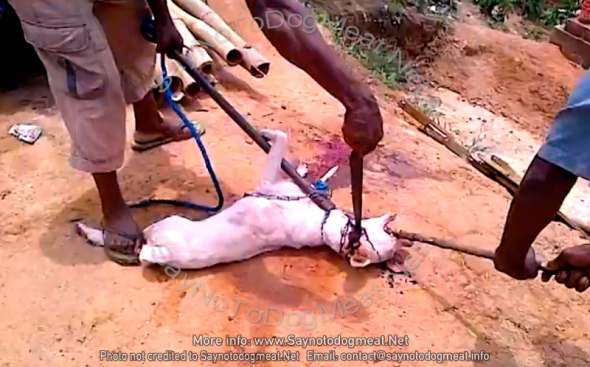
African dog butcher brutally slaughtering a dog for dog meat; the dog was in agony and fully conscious for several minutes.
Saynotodogmeat.Net Director Dr. Josa Depre advises that people refrain from eating dogs within Ebola infected zones. “Consuming dogs within an infected zone and knowing both dog can carry and show no signs is no different to playing Russian Roulette with one’s life,” says Dr. Depre.
Dogs in Africa are typically kept as pets to assist with hunting and are not “fed,” and therefore forced to scavenge food for themselves. In places like Liberia for example, dogs eat the carcass of Ebola infected animals and those same dogs are then captured by dog snatchers and sold for human consumption.
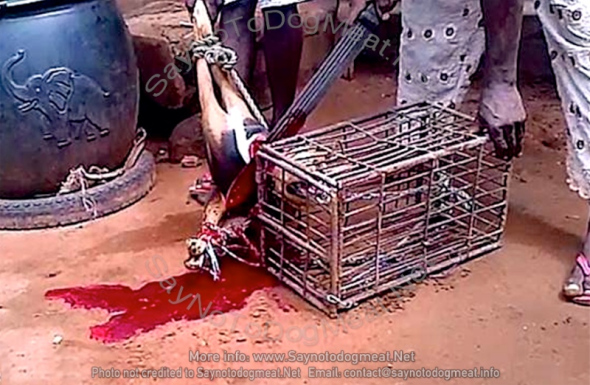
African dog butcher slowly slaughtering a dog, using a panga. Fully conscious, the dog was alive and in great agony for several minutes.
To date there have been no documented infections in felines, meaning that our domestic cats are probably safe from it.
Although dogs are susceptible to Ebola, the CDC concluded that “infected dogs are asymptomatic”, meaning that they do not develop symptoms.
During the early phase of their infection, however, they can spread the disease to humans and other animals through licking, biting, urine, and feces. However, the good news is that once the virus is cleared from the dog it is no longer contagious.”
Chop Shops In Mali
In San, Mali, there’s a restaurant in the old Bamabus terminal at the intersection turning south from the center of town. San is part of the Bobo ethnic area where dog meat is regularly served and eaten “as beef.” Restaurant reviews in Mali suggest that if you do not want to eat dog meat then you should stay away from ALL beef dishes, especially “chop shops” in certain areas, as a lot of the so-called beef is dog meat.
Guinea, which hasn’t closed any of its frontiers with six other nations, shares more than 800km of border with landlocked Mali to the east.
Ebola
Vaccines are not available until the first half of 2015, which is cold comfort for those who need vaccines immediately. Media statements such as “committed to ramping up production” by pharmaceutical companies are hollow words until the vaccines are actually produced and in use.
In America a New York doctor, Dr Craig Spencer who returned from Guinea on October 17th, has tested positive for Ebola, sparking terror amongst Americans after it was announced that the doctor had been travelling on the subway, possibly infecting other people. He is the first Ebola case diagnosed in New York, and the fourth in the US. On Tuesday he began to feel tired and developed a fever and diarrhoea on Thursday (BBC.)
The Ebola fatality rate can reach 90% - but current outbreak has mortality rate of about 70%. Incubation period is two to 21 days and there is no proven vaccine or cure. The current outbreak is the deadliest since Ebola was discovered in 1976.
An international team of scientists has been set up to determine the effectiveness of using the blood of Ebola survivors as a treatment. It is hoped the antibodies used by the immune system to fight Ebola can be transferred from a survivor to a patient.
How Not To Catch Ebola:
* Avoid direct contact with sick patients as the virus is spread through contaminated body fluids
* Wear protective cover for eyes
* Clothing and clinical waste should be incinerated and any medical equipment that needs to be kept should be decontaminated.
* People who recover from Ebola should abstain from sex or use condoms for three months
As with all the other Ebola infected areas, people in Mali are being urged to use soap when washing their hands. It is not customary to do this in Mali, but the World Health Organisation are stressing the importance of it.
All the African countries affected by Ebola are dog eating countries. There is a link between Ebola and dog meat.
DO NOT EAT DOG MEAT!
Thank you for reading,
Michele Brown.
GLOBAL MARCH
Saturday April 4th, 2015 Saynotodogmeat.Net is hosting a Global March for dogs and cats in the live meat trade. Please march with us, in your country. It will be an orderly and peaceful march but we need more ‘demonstration leaders.’ If you can help us, PLEASE EMAIL: [email protected]
Bring your family, children, pets and banners; we need as many people as possible, worldwide. Please mark your calendar and join our march. If you haven’t already done so, please click the box to let us know you are coming: https://www.facebook.com/events/294347744053559/
SAYNOTODOGMEAT.NEt NOW ACCEPTING DONATIONS
Saynotodogmeat.Net is now accepting donations: PLEASE MARK ALL DONATIONS “SAY NO TO DOG MEAT.NET” https://www.facebook.com/SayNoToDogMeat/app_117708921611213
No donation is too small and we are very appreciative of your help and support. Very soon we will be writing a full article outlining where donations will be used. You will receive an electronic receipt and we will too, which we will keep for historical data purposes. NO DONATION will be used to produce clothing with logos on, badges or banners. Donations are NOT for the directors. ALL MEMBERS FUND THEMSELVES.
PLEASE CONTINUE TO SIGN AND SHARE SAYNOTODOGMEAT.NET PETITIONS; WHEN COMPLETED THEY WILL BE HAND DELIVERED
PETITION FOR SOUTH KOREA
https://www.change.org/en-GB/petitions/president-geun-hye-park-take-dog-cat-meat-off-the-menu
PETITION FOR VIETNAM and THAILAND ANTI-SMUGGLING
https://www.causes.com/actions/1764795-a-petition-to-president-truong-tang-sang-moj-prime-minister-yingluck-shinawatra
PETITION FOR HEALTH MINISTER OF VIETNAM
https://www.causes.com/campaigns/71258-minister-of-public-health-thi-kim-tien
PETITION FOR NAGALAND
https://www.change.org/en-GB/petitions/additional-chief-secretary-take-dog-meat-of-nagaland-menu
PETITION TO BAN THE TRADE IN NIGERIA
https://www.change.org/en-GB/petitions/governor-of-lagos-hon-babatunde-fashola-ban-the-nigerian-dog-meat-trade-lagos
LETTER TO THE PRESIDENT OF THE PHILIPPINES
http://saynotodogmeat.net/2014/04/04/email-the-philippines-president-to-end-the-dog-meat-trade/
PLEASE SEND TO THE MUSLIM COUNCIL
http://saynotodogmeat.net/2014/01/17/open-email-to-the-muslim-council-of-great-britain/
PLEASE HELP THE PEOPLE OF TURKANA HERE
http://saynotodogmeat.net/2014/01/31/turkana-africa-emergency-aid-letter/
EMAIL THE GOVERNOR OF NIGERIA: New Address: [email protected]
http://saynotodogmeat.net/2013/12/03/email-excellency-dr-honorable-alausa-excellency-honorable-babatunde-fashola/
JOIN THE WORLDWIDE GLOBAL EVENT HERE TODAY
PLEASE EMAIL US A.S.A.P FOR INFORMATION ON HOW YOU CAN HELP. SATURDAY 4TH APRIL 2015 – TIME TO MARCH FOR DOGS AND CATS IN THE MEAT TRADE.
JOIN HERE https://www.facebook.com/events/294347744053559/ SHARE EVERYWHERE WILDLY
Child Abuse?
Meet Max Arredondo pictured below he’s aged from which he shot this Zebra with quite a heavy firearm within the Eastern Cape of Southern Africa. Aged just six its quite hard to actually take on board that there are parents out there teaching their children to kill animals. Unfortunately Max Arredondo is not the only child that is being taught to kill animals on the continent of Africa. Data reviewed by International Animal Rescue Foundation Africa has revealed more and more parents are now taking their children on safaris thus teaching them to kill.
This species of Zebra is not endangered, nor threatened.
Below is a comparison showing the legal ages to hunt and own firearms to that of the legal ages to watch films, play games
Speak up for the Voiceless.org has documented quite heavily on child hunters. Our partners International Animal Rescue Foundation Africa are now lobbying the Department of Environmental Affairs - Hon Edna Molewa head minister to introduce laws that will hopefully ban children from hunting. While its quite impossible to actually ban hunting in general, it is our duty of responsibility to now call for more tougher laws that “protect both children and animals”. Protecting children from adult violent activities and protecting animals from uneducated and inexperienced hunters that can inflict more pain and suffering to an animal. While Max may be an “educated” hunter it quite concerning to know that at such a young age his brain has been exposed to such violent activities.
In reality a mother or father teaching their child to kill an animal legally or illegally with a high powered weapon is no different to that of a parent placing their child in front of a (adult rated) television program that contains swearing, death, animal killing and more. Take a look at the following video below from YouTube like many hundreds online is classed as “age-restricted based on our Community Guidelines”. Its not just YouTube either that place these restrictions of which you require a Gmail account too log into.
YouTube state;
Age-restricted content
In some cases, real, dramatized or fake violence may not be suitable for all ages. “Similar to movie or television ratings”, our age-restrictions help viewers avoid watching content that they may not feel is acceptable for themselves or for their children.
YouTube goes on to state;
What we consider to be agree restricted
- Whether the video shows scenes containing physical attacks where the injury sustained is bloody or gory.
- Whether the video shows the graphic aftermath of a violent act.
- Whether the shots of violence or gore are the focal point of the video.
- Whether the violence contained in the video is realistic when posted in a dramatic context.
In South Africa, a temporary firearms and ammunition importation permit will only be issued at the port of entry if the applicant is twenty one (21) years of age or older. Does this law apply to native citizens too? Of course it does. The minimum age for gun ownership in South Africa is 21 years, with some exceptions that may include the fact that the applicant conducts a business, is gainfully employed, a dedicated hunter, a dedicated sports person or a private collector. Max pictured above is not anywhere near the minimum - he is six however doesn’t own this rifle. Laws state that you have to be 16 or older to hunt within South Africa, in some provinces the laws state that you have to be 14 years of age. The hunt above was most likely on a farm of which “no laws apply” to this activity. Had it been in the wild the chances are father and mother would be in a spot of bother.
In South Africa film are classified by the Film and Publication Board.[74] All broadcasters, cinemas and distributors of DVD/video and computer games must comply with the following:
- A: Suitable for all.
- PG: Parental Guidance
- 7–9PG: Not suitable for children under the age of 7. Children aged 7–9 years old may not be admitted unless accompanied by an adult.
- 10: Not suitable for children under the age of 10.
- 10–12PG: Not suitable for children under the age of 10. Children aged 10–12 years old may not be admitted unless accompanied by an adult.
- 13: Not suitable for children under the age of 13.
- 16: Not suitable for persons under the age of 16.
- 18: Not suitable for persons under the age of 18.
- X18: No One Under 18 Admitted; restricted to licensed adult premises.
- XX: Must not be distributed or exhibited in public.
Films that contain violence, death or “adult” content under South African law with regards to (PG) - 7–9PG: Not suitable for children under the age of 7. Children aged 7–9 years old may not be admitted unless accompanied by an adult.
As one can clearly see laws within South Africa are somewhat odd. Its “just reasonably” OK-ish to place a firearm within your child’s hands at the age of six and allow him or her to hunt an animal of which this is classified as “a violent and abusive act” but not reasonable to allow your child to view a “violent act[s] or abuse[s]” under the age of seven. Max in this case is 6. How does a violent video or game differ from that of a child taking a shot at a Zebra? It doesn’t of which this is in all due respects child abuse.
Exposing Children to Violence or Violent Acts
FACT - In 2011, nearly 60 percent of children (ages 17 and younger) were exposed to violence within the past year, either directly (as victims) or indirectly (as witnesses). Detailed documentation related mainly to domestic abuse, bullying, murder, animal abuse, rape, other. Regardless of what the type abuse children were exposed too, abuse is abuse no matter how much you try to sugar coat it, make it sound legal or necessary. Placing a gun in a the hands of a child at the age of six while the brain is still developing from 0-21 years of age is “exposing a vulnerable person” to abuse that can later on enact these same type of abuses out from which they see as “normal practice”.
Children are more likely to be exposed to violence and crime than adults are. An experience of violence can lead to lasting physical, mental, and emotional harm, whether the child is a direct victim or a witness. Children who are exposed to violence are more likely to suffer from attachment problems, regressive behavior, anxiety, and depression, and to have aggression and conduct problems. Other health-related problems, as well as academic and cognitive problems, delinquency, and involvement in the child welfare and juvenile justice systems, are also associated with experiences of violence. Even community violence that children do not directly witness has been shown to affect negatively children’s attentional abilities and cognitive performance.
One mechanism through which early, chronic exposure to violence affects children is by disrupting the developing brain. Specific brain structures (amygdala, hippocampus, prefrontal cortex) are adversely affected by stress. Executive functions (such as planning, memory, focusing attention, impulse control, and using new information to make decisions) can become impaired. Moreover, children who have had chronic exposure to real or perceived threats may become conditioned to react with fear and anxiety to a broad range of circumstances. Their diminished capacity to differentiate between genuine threats and objectively safe or neutral situations can impair their ability to learn and interact with others, and may lead to serious anxiety disorders. Unfortunately, while fear learning happens early in life, with emotional memories that are powerful and persistent, unlearning fears depends upon brain maturation that happens only later, and requires active work and evidence-based treatment.
Children exposed to violence are more likely than those not experiencing violence to become victims or perpetrators of further violence.
In conclusion exposing children to violence does impair their own understanding of violence in itself. If a child has been taught a violent act and is educated on inflicting violence then what’s to say that child will not then inflict that violence onto another person or animal. We see this form of child abuse as one of the worst simply because the child has been in one way or the other “educated”. They know how to use a rifle, their fear of death and wrongdoings is decreased, empathy and care although still present is somewhat pushed aside. A child not exposed to violence but love will show more compassion and emotion at seeing a dead, injured of suffering being than that of a child exposed and educated of violence acts. The video below depicts how Green Mile Safari had their hunting licences revoked after many breaches of hunting activities. Children hunting, running over dead animals in cars, hunting animals from a moving vehicle and more. Believe it or not there are many more cases such as these on South African farms from which many tourists and their families visit.
Thank you for reading. To stay up to date on African wildlife affairs please visit our Facebook page here.
You can also sign petitions below.
https://www.causes.com/campaigns/34435-stop-any-kind-of-safari-hunting-in-africa
http://www.change.org/p/stop-canned-hunting-in-south-africa
https://www.change.org/p/hon-gianni-pittella-ban-lion-and-rhino-trophies-into-the-european-union
Restriction of Lion and Rhinoceros trophy imports into the the European Union.
OPEN LETTER & SENT COMMUNICATION
President José Manuel Barroso
European Commission
Berlaymont, Rue de la Loi, 200
1049 Bruxelles
Date: 17th October 2014
Re: European Legislation on Restriction of Lion and Rhinoceros trophy imports into the the European Union.
Brief summary;
We “International Animal Rescue Foundation” call for European Legislation to restrict the importation of sport hunted Lion and Rhino trophies (only) from “any country” into all European Countries within the European Union. We the named herein only support imports of Lion and Rhino parts or carcasses for veterinary science and museum artifacts for educative purposes only.
Dear President José Manuel Barroso;
Your Honorable José Manuel Barroso We International Animal Rescue Foundation Africa ask for your support to implement law[s] to restrict the import/export of Lion and Rhino sport hunted trophies into the European Union from (any country or continent). As set out under the European Union Legislation / Environmentalism and Preservation procedure stated hereto; http://eur-lex.europa.eu/legal-content/EN/TXT/?qid=1413671152558&uri=URISERV:l11023 it is the European Union and Commissions responsibility to protect the biodiversity and natural habitats of both Fauna and Flora. As we see it (now) the European Union/Commission and Parliament is failing within its duties under Protocol one of the Council Regulation (EC) No 338/97 of 9 December 1996 on the protection of species of wild fauna and flora by regulating trade either live or dead of Lion and Rhino trophies and/or parts.
We International Animal Rescue Foundation Africa call on the European Commission to now regulate trade of both sport “hunted” Lions and Rhinos under the Act of Council Regulation (EC) No 338/97 of 9 December 1996 on the protection of species of wild fauna and flora by regulating trade for the reasons as set out herein for your information.
Restrictions on sport hunted Lions and parts under Council Regulation (EC) No 338/97 of 9 December 1996 on the protection of species of wild fauna and flora by regulating/restricting trade;
- Since the early 1980’s we have lost countless individual Lions and Rhinos to sport hunters and poachers within Africa. While sport hunting may not be seen as a overall major threat to both species of Lion and Rhino it is having a detrimental effect on the now shrinking populations of Lions in Africa. And with regards to “poaching” of Rhinos something now has to give. The Rhino cannot any longer compete with the vast number of poaching incidents occurring daily of which has placed the Rhino now at tipping point. All in all your excellency should the candle continue to burn at both ends we will lose both ionic species of mammalian in under two decades. Poaching is raging out of control within Africa threatening many species alike. With South Africa being the largest country hit by poachers and visited by thousands of European and American tourist hunters a year, time must now come that we as a European Union must take evasive action to slow down and/or halt (extinction). The reasons are set out below for your information.
- A century ago there were some 200,000 Lions roaming all over the African continent. Now there are no fewer than a mere 30,000 if that with the lowest estimated figure pointing to a possible 15,000. Within the Lions existing ranges there are no more than 1,000 Lions within each of its African habituated countries of which there are more Lions within canned hunting farms and ranches than in some wild populated areas. Those Lions within canned hunting farms and ranches pose a disease and genetic risk to other species of fauna and wild Lion populations that live around these facilities.
- Over the last ten years a staggering two thirds of all Lions hunted for sport were imported from Africa into the United States of America Between 2000 and 2008, some 4,250 wild lions were exported as trophies most of which into the European Union although America was the largest importer and still is to date.
- African Lions have vanished from a whopping 80% of their range of which hunting, habitat fragmentation, human species conflict and unsustainable agriculture are primary causes for Lion depletion.
- Lions have become extinct in 26 countries. Only seven countries – Botswana, Ethiopia, Kenya, South Africa, Tanzania, Zambia and Zimbabwe – are believed to contain more than 1,000 lions each. Panthera leo is bordering endangerment. Should restrictions not be implemented and or bans put in place then it is a sad fact of life we will lose a further 1/4 of all mature individuals thus seeing more Lions pushed from extant into “regional” extinction.
- Although the single biggest threat by far to the animals survival is humans, though not necessarily western hunters. It is just the very, very widespread killing of Lions, mostly in a conflict situation, by anyone who is trying to farm livestock in Africa and finds it very difficult to co-exist with Lions. Hunting of Lions though is still playing a great role in reducing further species of which is seeing many Lions wild and captured depleted. Furthermore the black market trade in Lion bone wine threatens our Lion species greatly. International Animal Rescue Foundation Africa has already this year seen further evidence of European’s involved within the black market trade of Lion bones generating hundreds of thousands “in all”.. While this evidence is within the public domain and has been for some years why are we still not taking the relevant steps to secure the species future?
- Between 1999 and 2008, 64% of the 5,663 Lions that were killed in the African wild for sport ended up being shipped to America, it must also be noted numbers had risen sharply in those 10 years, with more than twice as many Lions taken as trophies by US hunters in 2008 than in 1999. Should US hunters continue their rampage followed up with EU hunters least forgetting habitat destruction then its quite likely we’ll begin to see more loclised (regional extinctions) within the next five years. In addition to personal trophies, Americans are also the world’s biggest buyers of Lion carcasses and body parts, including claws, skulls, bones and penises, Asians the second largest and Europeans the third largest buyer. In the same years, the US imported 63% of the 2,715 Lion specimens put up for sale. While the United States, Asia and Europe hunters buy and sell the demand for Lion parts continues thus seeing the species threatened furthermore.
- From 1996 – 2008 species populations of Panthera leo has not increased but decreased furthermore seeing few localised extinctions. The African Lion is still listed as vulnerable on the International Union for the Conservation of Nature’s Red List of Threatened Species. Listed as Endangered is the next step - then we will most certainly see the Lion species in danger furthermore.
- Demand from the Far East is also driving profits for Lions breeders. In 2001, two Lions were exported as “trophies” to China, Laos and Vietnam; in 2011, 70 Lion trophies were exported to those nations. While the trade in Tiger parts is now illegal, demand for Lion parts for traditional Asian medicine is soaring. In 2009, five Lion skeletons were exported from South Africa to Laos; in 2011, it was 496. The legal export of Lion bones and whole carcasses has also soared. While Tiger populations decrease so will Lions too.
- Lastly Eastern European countries such as Russia not aligned with the Cites convention nor the “European Union” are actively selling Lion skins into the market to produce rugs, upholstery, and furniture. This is a threat in its own and with all factors above combined with the trade in Eastern Europe we must now protect our Lion populations more than ever.
Restrictions on sport hunted Rhinoceros and parts under Council Regulation (EC) No 338/97 of 9 December 1996 on the protection of species of wild fauna and flora by regulating/restricting trade;
- In the early 1950s, when Mao Zedong promoted so-called traditional Chinese medicine (TCM) as a tool for unifying the country he had recently come to lead. Even though Chairman Mao himself did not believe in TCM, he called for its use over Western medicine. Among the many “cures” touted by China’s “New Medicine” was powdered Rhino horn, which was said to cure everything from fevers to cancer. Since Mao made this public Rhinos have been decimated at staggering proportions mostly by poachers. However now as the demand the Rhino horn has increased rapidly within Asia of which the horn can fetch on the market between $50,000 and $70,000kg hunters have been caught in many stings peddling Rhino horns from their “legally” obtained trophies to supply the (TCM) market. Since the year 2000 we have lost over 3,000 Rhinos just in South Africa alone.
- Between 1960 and 1995 an astonishing 98 percent of black Rhinos were killed by poachers, either to feed the new and voracious demand for TCM or, to a lesser extent, for horns to be used as ceremonial knife handles in the Middle East. From 2000 onwards both White and Black Rhino populations are now being hit hard by poachers, every day we lose a further 3-4 Rhinos in South Africa alone custodian to the worlds largest remaining Rhino crashes. Evidence. All rhinos suffered; the western black Rhino, already weakened by decades of overhunting, was the hardest hit. The white Rhino is now at “tipping point”.
- Back in 2012 the Department of Environmental Affairs (South Africa) banned Vietnamese hunting permits due to the popularity of pseudo hunting and the then past arrests of the Gronwald poaching gang and Chumlong Lemtongthai whom hired pseudo (hunters) from Thailand and possibly other fake hunters from Vietnam. Although banned - Vietnamese hunters this hasn’t stopped foreign citizens from joining in the hunting/poaching trend. It was stated by Hon Edna Molewa and Cites that Eastern European hunting applications had shot up from 2012 by some 1000% of which its now known that Polish, Russian and Czech Republic hunters are mostly pseudo hunters cashing in on the Rhino horn demand thus supplying the Asian market in Vietnam, Laos and China with Rhino horn. Whilst this is clearly evident and “legitimate” hunting practices still ongoing this is placing more pressure on the Rhino species decreasing their populations even more of which this “fake and legitimate hunting” plus poaching has led to the Rhino populations decreasing furthermore.
- Trophy hunting does not rake in revenue - A study on the economic benefit behind Lion hunting for example in Africa concluded, “The suggestion that trophy hunting plays a significant role in African economic development is misguided…Revenues constitute only a fraction of a percent of GDP and almost none of that ever reaches rural communities.” Dr. Naomi Rose agrees as stated on the HSUS blog, “Regarding the statement that trophy hunters do a lot for conservation, it’s true that some portion of some hunters’ fees goes to conservation in some countries, but it’s rarely the major source of conservation funding. Usually middlemen—commercial outfitters—take the lion’s share of sport hunting proceeds and local communities and conservation and management agencies get the dregs.” And its quite evident that trophy hunting is not generating revenue - if it was then why is this “alleged $200 million” not seen poaching tackled. It would be quite fare to say that $200 million x 4 years = $800 million is quite enough to sustain species welfare. Yet it hasn’t which is why we call for an immediate ban of LION and RHINO trophies into Europe.
- White Rhino is currently listed on the International Union for the Conservation of Nature’s Red List as (near threatened) Whilst we are aware that evidence has shown an “increase” of White Rhino populations poaching from either African “poachers” legal hunters and others caught (illegally poaching) has since pushed the species of White and Black Rhino to tipping point. Both Rhino species are normally gestate no longer than 15-16 months. One Rhino cow regardless of the species produces a new born every two to three years. However we are losing species of both Black and White Rhino at 3-4 every day. International Union for the Conservation of Nature has placed the number of White Rhinoceros populations at 20,160 (2010). Since 1990 and including the recent poaching figures for (October 2014) we have lost a total of 3,803 Rhinoceros. Most of these deaths have occurred in South Africa that holds a total of 93.2% of the worlds largest Rhino populations. 3,803 is not including “collateral damage” such as unborn fetus nor natural deaths. If we took unborn fetes and natural deaths into account with that of the 1990-2014 poaching figures its quite likely that the current population trend of White and Black Rhinos is nowhere near the 2010 figures of 20,160. As of 2012 International Animal Rescue Foundation Africa communicated to Hon Edna Molewa. In writing Molewa basically quoted from the IUCN the population of Rhino has increased “ten fold” mostly helped by hunters. Yet there is no evidence of such increases by even a “five fold” and if such hunting practices had increased the White and Black Rhino population then why is the Rhino populations within Africa now “threatened and still endangered” of which are standing at “tipping point”? The answer is quite simple. Our “wild Rhino” populations are decreasing rapidly. What Hon Edna Molewa most likely meant was that Rhino populations had increased ten fold on “hunting reserves” while the remainder of the wild populations the government nor Non-Profits know little about. No official census of the wild populations have been seen since the early millennium either. This gives us reason to now ask that all Rhino trophies and parts acquired via trophy hunting are banned from export/import into Europe unless for scientific and/or museum purposes. Why did Molewe not answer International Animal Rescue Foundation’s questions in full? Rather than simply copy and paste a number from the IUCN website? We believe this is because the South African government know little about their own populations of Rhino and what the real figure of wild populations of both black and white stand at. Moving back to the Census - A group of Rhino Activists did lobby the South African government (early 2012) asking for census within their (9 point plan) to be conducted supported by over 29,000 people.
- Rhinos still under threat no matter what the South African Government try to do to stem the poaching crisis - 2012 Vietnamese hunting permits were banned due to pseudo hunting. Department of Environmental Affairs believed this would someway “reduce the poaching crisis”. October 2014 though saw yet another Rhino poaching kingpin and accomplices being vets, pilots, even “HAWKS” police, arrested along with the leader himself Hugo Ras a South African hunter and attorney. Ras was known the police with regards to “poaching crimes”. The group is alleged to have contributed to the brutal slaughter and mutilation of 24 Rhinos in state and privately owned game reserves, resulting in 48 horns poached. Only two of the 24 Rhinos that had been attacked, survived, but they were de-horned after they had been darted. Twenty two of the Rhinos were darted with the veterinary drug M99, the other two were shot. An additional 36 horns were either stolen or obtained through other illegal means. The killings took place between 2008 and 2012, during which period the syndicate illegally obtained 84 Rhino horns and killed 22 Rhinos valued at nearly R22 million. International Animal Rescue Foundation Africa and International Animal Rescue Foundation Europe call for an immediate ban of all Rhino parts and trophies into Europe because there is more than likely more Rhino poaching syndicates operating of which Europe is being used as a transit route to peddle legally Rhino “trophies” through onto Asia. By cutting one of the main transit routes out we help to disrupt trade and demand furthermore.
- The rate of Rhino deaths has surpassed the rate of births. Rhino poaching has accelerated to a dangerous level. With deaths outweighing births, it puts their species just a few short years away from extinction. 1990 = 14 deaths, 1994 = 27 deaths, 2002 = 25 deaths, 2006 = 36 deaths, 2008 = 83 deaths, 2009 = 122 deaths, 2010 = 333 deaths, 2011 = 448 deaths, 2012 = 668 deaths, 2013 = 1004 deaths and to date October 2014 we stand almost at 900 deaths. While the majority of these deaths have been caused by African poachers killing Rhino to supply the Asian black market hunters, game wardens, farmers, veterinary officers and more are also contributing to deaths that we are still fully unaware of. While SAPS and HAWKS are flushing out corrupt hunters, wardens and vets poaching and corrupt hunting continues. What seems legitimate trophies being exported out off Africa in Europe could well be more sinister. Hence the reasons we call for a trophy hunting ban of Rhino into Europe from Africa based on the level of illegal poaching and that of pseudo poaching that has already been shown to be supplying the black market within Asia.
Since publishing our main petition aimed at Hon Gianni Pittella EPP, Hon Manfred Weber S&D, Hon Martin Schulz President of the European Parliament, Hon Herman Van Rompuy President of the European Council, Hon Jean Lambert MEP and Hon Keith Taylor MEP including yourself your Excellency we have amassed a total count nearing nine hundred signatures that call for a restriction of sport hunted Rhinos and Lions into all European member countries. Australia has already banned the importation/exportation of sport hunted Rhinoceros with a further ban expected of sport hunted Lions.
International Animal Rescue Foundation Africa lobbied with many other Non-Profits the United States too as of last year that has since prompted Director Daniel Ashe United States Fish and Wildlife Service to now look into banning/restricting sport hunted Lion trophies into the USA. Australia and the United States are taking leading steps here and setting positive and professional examples. However as yet Europe is still dragging its heals. While we continue to drag our heals both Lions and Rhinoceros continue to edge closer and closer to extinction. The time for the healing of the wounds has come your excellency.
Sincerely yours
Board of Directors
Josa C. Depre
Jon E. Williamson
Helen S. Farthing
Rosalyn Simon
J. C. Dimetri
Muhammad A. Muller
Sonya T. Franklin
Johan N. Strauss
Please sign the petition here
Polar Bear - Candle Burning at Both Ends.
We know that you do not like viewing these pictures, They must be made public though. After all they are already public but in the wrong sense.
The Polar Bear’s future is literally melting away along with the Arctic sea ice beneath its feet. Meanwhile, some countries continue to allow the bears to be hunted for sport and their body parts to be sold legally in the international commercial market. Miranda pictured here killed this Polar Bear with a bow few years back. Polar Bears are threatened by hunters, illegal poachers and climate change oddly caused by us. Is it OK to then state that this amazing beast must be the worlds most unluckiest animal “still” alive? Tell Miranda what you think above by clicking the photo url.
Antarctica’s polar ice cap is melting at a staggering rate never seen before. Many species of animals are being harmed by this rapid melt that humans have contributed too. One animal that’s in dire need of emergency protection is the Polar Bear.
Unfortunately with climate change on the rise and Antarctica melting away as we speak - men such as Miranda from Ohio now currently residing in Englewood, Florida feels it even more necessary to place the species of Polar Bear in even more danger.
So what’s the the current news on Antarctica?
German researchers have established the height of the Greenland and Antarctic ice caps with greater precision than ever before. And the new maps they have produced show that the ice is melting at an unprecedented rate.
The maps, produced with a satellite-mounted instrument, have elevation accuracies to within a few metres. Since Greenland’s ice cap is more than 2,000 metres thick on average, and the Antarctic bedrock supports 61 percent of the planet’s fresh water, this means that scientists can make more accurate assessments of annual melting.
Dr Veit Helm and other glaciologists at the Alfred Wegener Institute’s Helmholtz Centre for Polar and Marine Research in Bremerhaven, Germany, report in the journal The Cryosphere that, between them, the two ice sheets are now losing ice at the unprecedented rate of 500 cubic kilometers a year.
Big picture
The measurements used to make the maps were taken by an instrument aboard the European Space Agency’s orbiting satellite CryoSat-2. The satellite gets closer to the poles—to 88° latitude—than any previous mission and traverses almost 16 million sq km of ice, adding an area of ice the size of Spain to the big picture of change and loss in the frozen world.
CryoSat-2’s radar altimeter transmitted 7.5 million measurements of Greenland and 61 million of Antarctica during 2012, enabling glaciologists to work with a set of consistent measurements from a single instrument.
Over a three-year period, the researchers collected 200 million measurements in Antarctica and more than 14 million in Greenland. They were able to study how the ice sheets changed by comparing the data with measurements made by NASA’s ICESat mission.
More complex
Greenland’s volume of ice is being reduced at the rate of 375 cubic km a year. In Antarctica, the picture is more complex as the West Antarctic ice sheet is losing ice rapidly, but is growing in volume in East Antarctica.
Overall, the southern continent—98 percent of which is covered with ice and snow—is losing 125 cubic km a year. These are the highest rates observed since researchers started making satellite observations 20 years ago.
“Since 2009, the volume loss in Greenland has increased by a factor of about two, and the West Antarctic ice sheet by a factor of three,” said Angelika Humbert, one of the report’s authors.
And the Polar Bear?
Robert F. Kennedy quoted;
“The Polar Bear has been sending us a desperate S.O.S. There have been documented reports of Polar Bears drowning and starving — and of snowy dens collapsing on newborn cubs and their mothers from unseasonable rains. The world no longer has any Polar Bears to spare — certainly not to end up as a rug in front of a trophy hunter’s fireplace. We have to put a stop to the worldwide commercial trade in polar bear parts”
-Robert F. Kennedy, Jr., NRDC Senior Attorney
And what a statement to make. True to its point saddening to read we are this stunning animal is the most unluckiest animal facing extinction on the planet or if not hunted to extinction half the population will face a very daunting life in zoological gardens or man made reserves of which the WWF is creating as we speak to help sustain the worlds only Antarctic bear.
Polar bears belong in the wild, living and free — not as mounted decorations in the trophy rooms of wealthy big game hunters.
Upgrading the polar bear’s protection under the Convention on International Trade in Endangered Species (CITES) represents our best hope for saving them from trophy hunting and the ongoing commercial trade in polar bear pelts, fur, claws and skulls.
NRDC is in the final stretch of our intensive two-year effort leading up to the next meeting of CITES, which could act to ban this trade in goods made from polar bears and tighten controls on polar bear trophy hunts.
The video below is extremely traumatizing however IT MUST be shown. We have created this problem now we must help to slow it down. Question> Why is CITES signatories allowing the inhumane killings of Polar Bears for rugs and parts when climate change is also killing the species off? Before you know it, in a blink of an eye lid our Arctic Bears will be gone.
Dr Jon Williamson - PhD, Ba, EnVstU
Environmental Scientist - Chief Registrar
The next Cites conference of parties is this 2015. We MUST all act today and demand that Polar Bear hunting is banned for good and more environmental research is carried out to now sustain our Antarctic fauna and flora.
ACT TODAY - NOT TOMORROW
Corroboree Frogs - Critically Endangered
Corroboree Frogs are amongst the most visually spectacular frogs in the world and are Australia’s most iconic amphibian species. Listed as critically endangered, the two species have several differences between them, including colour, patterns and even skin biochemistry.
The frogs are around 3centimetres in length and only live in the sub-alpine regions within Kosciuszko National Park, from Smiggin Holes in the south, and northwards to the Maragle Range. Southern Corroboree Frogs only occur between about 1300 and 1760 m above sea level.
Breeding
Habitat which is critical to the survival of Corroboree Frogs includes both breeding habitat and nearby areas where they feed. The frogs have to be four years old before they can begin to reproduce and adults only have one breeding season around December, when males build chamber nests within grasses and moss near shallow pools, seepages and so on.
Corroboree Frogs tend to breed in water bodies that are dry during the breeding season. Outside the breeding season, Corroboree Frogs have been found sheltering in dense litter and under logs and rocks in nearby woodland and tall moist heath. Northern Corroboree Frogs have been found to move over 300 metres into surround woodland after breeding.
The diet of Corroboree Frogs consists mainly of small ants and, to a lesser extent, other invertebrates. Typically, the pools are dry during the breeding season when the eggs are laid. The males have three call types: an advertisement call, threat call, and courtship call.
Males woo their lady-frogs by singing. Each male will attract up to ten females to his burrow sequentially and may dig a new burrow if his first is filled with eggs.
If a female is attracted to a male, she will lay her eggs in his nest. The male will remain in his nest through the breeding season and may accumulate many clutches. Clutch size for Corroboree Frogs is relatively low for a frog species; 16 to 38 eggs per female.
Within the nest, the eggs develop to an advanced stage, before development stops and they enter what is called ‘diapause’. This effectively means that the embryos remain, without developing further, until flooding of the nest following autumn or winter rains stimulates them to hatch.
After hatching, the tadpoles move out of the nest site and into the adjacent pool where they live for the remainder of the larval period as a free swimming and feeding tadpole. Corroboree Frog tadpoles are dark in colour, have a relatively long paddle shaped tail, and grow to 30 mm in total length. The tadpoles continue growing slowly, particularly over winter when the pool may be covered with snow and ice, until metamorphosis in early summer.
Corroboree frogs are the first vertebrates discovered that are able to produce their own poisonous alkaloids, as opposed to obtaining it via diet as many other frogs do. The alkaloid is secreted from the skin as a defence against predation, and potentially against skin infections by microbes. It has been described as potentially lethal to mammals if ingested. The unique alkaloid produced has been named pseudo-phrynamine.
Corroboree frogs hibernate during winter under whatever shelter they can find. This may be snow gum trees, or bits of bark or fallen leaves. Males stay with the egg nests and may breed with many females over the course of one season.
Conservation status
Both species have declined dramatically in the past thirty years. However, the Southern Corroboree Frog has suffered from more serious declines.
Current status
The Southern Corroboree Frog, as of June 2004 had an estimated adult population of 64. This species has suffered declines of up to 80% over the past 10 years. It is found only within a fragmented region of less than 10 km² within Mount Kosciuszko National Park in the Snowy Mountains in New South Wales. It is only found at 1300 m above sea level (Osborne 1989). It is currently listed as critically endangered and is considered to be one of, if not, Australia’s most endangered species.
The Northern Corroboree Frog is more widely distributed across about 550 km² of the Brindabella and Fiery Ranges in Namadgi National Park, Australian Capital Territory, and Kosciuszko National Park and Buccleuch State Forest in New South Wales. It is found above about 1000m and is found to have higher population numbers at lower elevations. It has recently been downgraded from critical to endangered by the IUC finding.
Cause for decline
The near-loss of these frogs has been attributed to a variety of causes, such as habitat destruction from recreational 4WD use; development of ski resorts; feral animals; degradation of the frogs’ habitat; the extended drought cycle affecting much of southeastern Australia at present; and increased UV radiation flowing from ozone layer depletion.
The drought affects these frogs by drying out their breeding sites so that the breeding cycle, which is triggered by seasonal changes and may require moistening of the bogs in autumn and spring to bring on specific developmental events, is delayed. This may mean that tadpoles have not metamorphosed by late summer when their bogs dry out, and so perish. The bogs themselves are apparently drier than usual.
Severe bushfires in the Victorian and NSW high country in January 2003 destroyed much of the frogs’ remaining habitat, especially the breeding sites and the leaf litter that insulates overwintering adults. The fire affected almost all Southern Corroboree Frog habitat, however recent surveys have shown that the fire resulted in a lower than expected decline in population.
As with many other Australian frogs, the predominant reason for the Corroboree Frogs’ decline is thought to be infection with the chytrid fungus. This fungus is believed to have been accidentally introduced to Australia in the 1970s and destroys the frogs’ skin, usually fatally. Corroboree frogs’ eggs appear to be immune. Frog populations may eventually be able to acquire immunity, as wild relatively healthy adults have been found with the fungus on their skin.
Conservation efforts
The Amphibian Research Centre had already begun a rescue programme under which eggs were collected and raised to late tadpole stage before return as close as possible to their collection site. Research is now underway into captive breeding and on which lifecycle stage - eggs, tadpoles or adults - promises the best chance of survival following return to the wild.
The national parks authorities in the Australian Capital Territory, New South Wales and Victoria have developed conservation programmes, including a captive husbandry programme at Tidbinbilla, ACT, Taronga Zoo in Sydney, as well as Zoo’s Victoria at Healesville Sanctuary.
The two species are the Southern Corroboree Frog (Pseudophryne corroboree) and the Northern Corroboree Frog (Pseudophryne pengilleyi).
To read more on Corroboree Frogs and how to help them: www.corroboreefrog.com.au
Thank you for reading.
Michele Brown.

